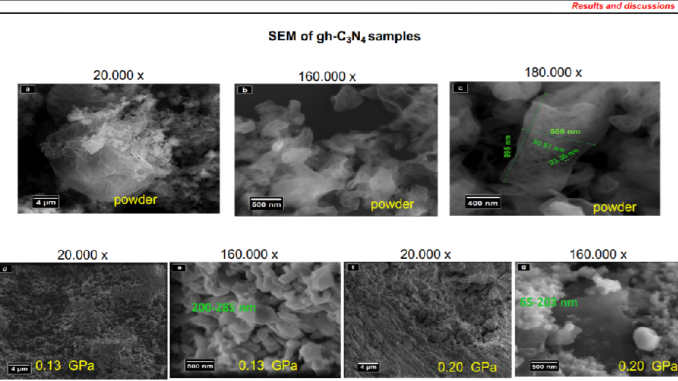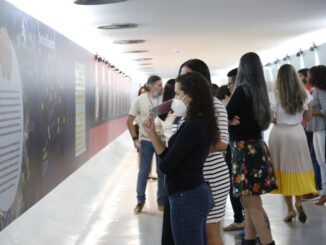
Nesta quarta-feira (01), que marca o terceiro dia da ‘XIX Brazil MRS Meeting’, o docente do Departamento de Física da Universidade Federal de São Carlos (DF – UFSCar), pesquisador e Coordenador de Difusão do Centro de Desenvolvimento de Materiais Funcionais (CDMF), Adilson de Oliveira, apresentou o estudo “Ferromagnetic behavior induced by defects due to structural distortion in pristine g-C3N4”.
A pesquisa, que foi apresentada durante o simpósio que homenageia o Professor Sergio Machado Rezende, se debruça sobre o nitreto de carbono grafítico (g-C3N4), um material semicondutor polimérico 2D com muitas aplicações, como dispositivos eletroquímicos, eletrônicos, catálise e magnéticos, mas que estabelece o controle das suas propriedades magnéticas como um desafio para diversos usos. Neste trabalho, os pesquisadores relatam um estudo sistemático onde o controle das distorções estruturais em amostras primitivas de g-C3N4 foi feito através de pressão isostática.
A pesquisa também contou com a autoria de José Carlos Rodrigues dos Santos, Marcio W. Paixão e Ernesto C. Pereira.
Confira abaixo o resumo do trabalho:
Resumo
Graphitic carbon nitride (g-C3N4) is a 2D polymeric semiconductor material many applications as electrochemical, electronics, catalysis, and magnetic devices. However, the control of magnetic properties, as ferromagnetic behavior is a challenge for different uses. In this work, we report a systematic study where the control of the structural distortions in pristine g-C3N4 samples were done through of isostatically pression. The samples were synthesized by pyrolysis of urea (CH4N2O) heated in furnace with at 5 °C/min up to 500 °C and maintain for 2 h in this temperature and cooling down to room temperature. The powdered samples were isostatically pressed into pellets using a nonmagnetic plastic die with pressures up to 0.20 GPa. The magnetization measurements as a function of applied magnetic field and temperatures were performed using a VSM-SQUID magnetometer. The presence of magnetic impurities was discard using flame atomic absorption analysis with resolution ppb and metallic contaminations as Fe, Ni and Co were not observed. The results show that the application of isostatic pressure causes morphological distortion in the molecular structure of g-C3N4, of the order of 9 and 13 pm and, as a consequence, magnetic moments of the localized electrons are induced by these distortions. The values of the magnetic parameters such as saturation magnetization and coercive field increased with the increase of the applied pressure in the samples due to the increase of distortions at the length scale of from 9 to 13 pm.
______________________________________________________________________________
CDMF
O CDMF é um dos Centros de Pesquisa, Inovação e Difusão (Cepids) apoiados pela Fundação de Amparo à Pesquisa do Estado de São Paulo (Fapesp), e recebe também investimento do Conselho Nacional de Desenvolvimento Científico e Tecnológico (CNPq), a partir do Instituto Nacional de Ciência e Tecnologia dos Materiais em Nanotecnologia (INCTMN).




